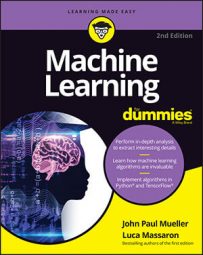The remedy, which is called ensembling of predictors, works perfectly when your training sample is not completely distorted and its distribution is different from the out-of-sample, but not in an irremediable way, such as when all your classes are present but not in the right proportion (as an example). In such cases, your results are affected by a certain variance of the estimates that you can possibly stabilize in one of several ways: by resampling, as in bootstrapping; by subsampling (taking a sample of the sample); or by using smaller samples (which increases bias).
To understand how ensembling works so effectively, visualize the image of a bull’s eye. If your sample is affecting the predictions, some predictions will be exact and others will be wrong in a random way. If you change your sample, the right predictions will keep on being right, but the wrong ones will start being variations between different values. Some values will be the exact prediction you are looking for; others will just oscillate around the right one.
By comparing the results, you can guess that what is recurring is the right answer. You can also take an average of the answers and guess that the right answer should be in the middle of the values. With the bull’s-eye game, you can visualize superimposing photos of different games: If the problem is variance, ultimately you will guess that the target is in the most frequently hit area or at least at the center of all the shots.In most cases, such an approach proves to be correct and improves your machine learning predictions a lot. When your problem is bias and not variance, using ensembling really doesn’t cause harm unless you subsample too few samples. A good rule of thumb for subsampling is to take a sample from 70 to 90 percent compared to the original in-sample data. If you want to make ensembling work, you should do the following:
- Iterate a large number of times through your data and models (from just a minimum of three iterations to ideally hundreds of times of them).
- Every time you iterate, subsample (or else bootstrap) your in-sample data.
- Use machine learning for the model on the resampled data, and predict the out-of-sample results. Store those results away for later use.
- At the end of the iterations, for every out-of-sample case you want to predict, take all its predictions and average them if you are doing a regression. Take the most frequent class if you are doing a classification.
Leakage traps can surprise you because they can prove to be an unknown and undetected source of problems with your machine learning processes. The problem is snooping, or otherwise observing the out-of-sample data too much and adapting to it too often. In short, snooping is a kind of overfitting — and not just on the training data but also on the test data, making the overfitting problem itself harder to detect until you get fresh data.
Usually you realize that the problem is snooping when you already have applied the machine learning algorithm to your business or to a service for the public, making the problem an issue that everyone can see.You can avoid snooping in two ways. First, when operating on the data, take care to neatly separate training, validation, and test data. Also, when processing, never take any information from validation or test, even the most simple and innocent-looking examples. Worse still is to apply a complex transformation using all the data.
In finance, for instance, it is well known that calculating the mean and the standard deviation (which can actually tell you a lot about market conditions and risk) from all training and testing data can leak precious information about your models. When leakage happens, machine learning algorithms perform predictions on the test set rather than the out-of-sample data from the markets, which means that they didn’t work at all, thereby causing a loss of money.
Check the performance of your out-of-sample examples. In fact, you may bring back some information from your snooping on the test results to help you determine that certain parameters are better than others, or lead you to choose one machine learning algorithm instead of another. For every model or parameter, apply your choice based on cross-validation results or from the validation sample. Never fall for getting takeaways from your out-of-sample data or you’ll regret it later.

